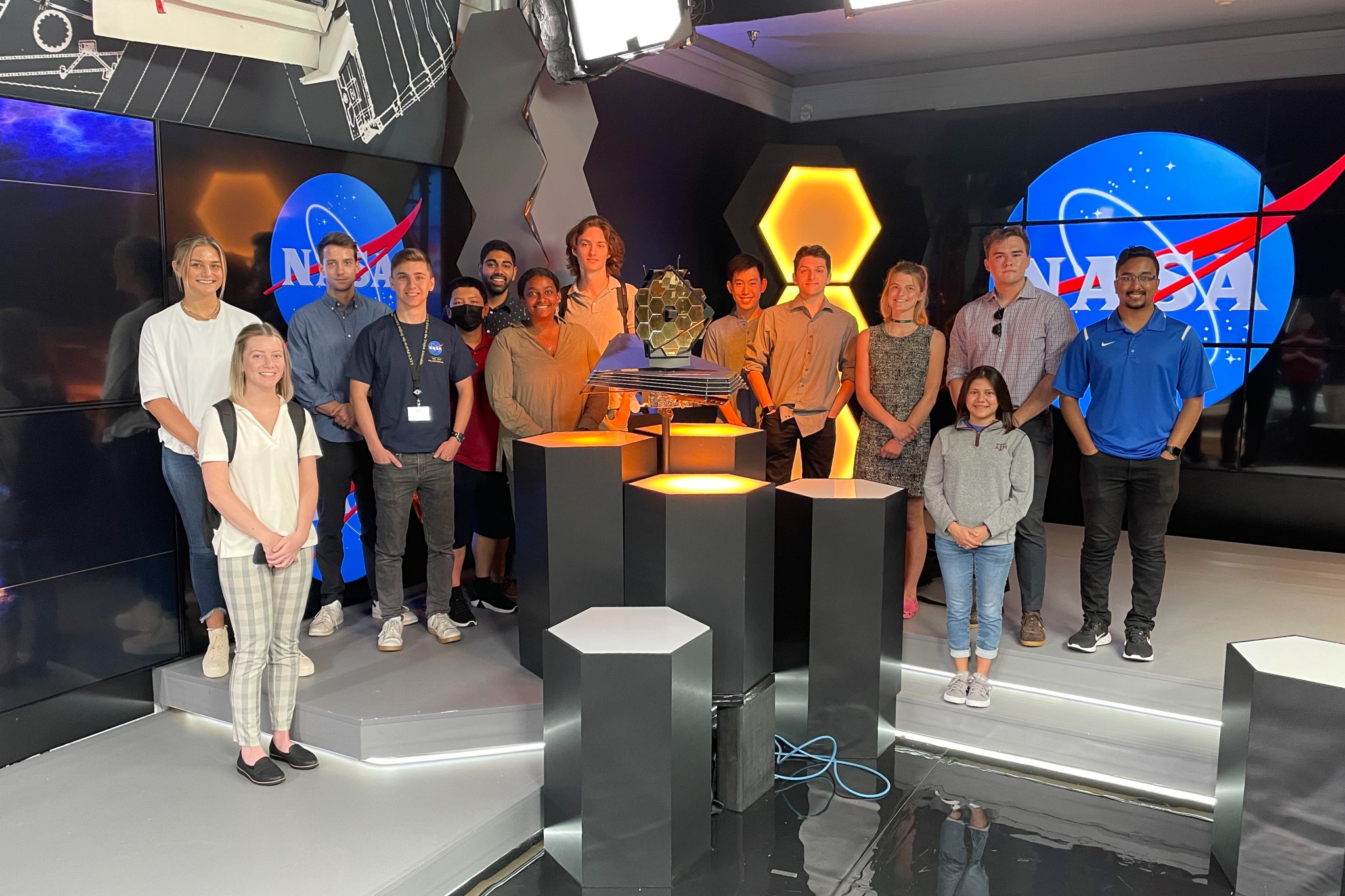Since the pandemic began, the first day of a Goddard Space Flight Center internship meant fiddling with a coffee pot, angling the computer screen so that pajama pants were just hidden, and then pressing the “join meeting” button from back porches and university dorm rooms. This week, however, marked a turning point for Goddard; for the first time in two years, local interns have returned to campus.
Excitement from day one was tangible. Equipped with a NASA computer, a smartcard token, and a passion for science, interns begin their 10-week immersion into heliophysics, augmented reality information systems, Spanish science communication, space medicine, and other specializations.
“I am most excited to learn about NASA’s missions in astrophysics,” said second-time intern Asim Qureshi, also sharing his enthusiasm for “where the agency is going forward with technology development and creation of observatories.” Qureshi comes to Goddard with a background in mechanical engineering, and while he acknowledges there is a learning curve, he knows he can handle the challenge. “Most people are not able to get this close to the lens, so I am very honored to have this opportunity.” Qureshi will be supporting the Goddard Optical and Detector Branch, where he will research and track the detectors made in the astrophysics programs.
The Goddard campus is still quiet; some employees are only on-site two or three days a week, and many Goddard interns still dial in virtually from across the country. With some interns continuing to work from home and others working on-site, the center is dedicated to tackling the challenges of a hybrid structure and creating meaningful internships for all students.
“The OSTEM and Goddard Onboarding teams worked diligently to onboard our summer interns during many changes to policy and processes, while still ensuring that interns will receive the best experience during their time at NASA”, said Sarah Alspaw, Internship Program Coordinator at Goddard.
This summer, Goddard hosts around three hundred interns, with about twenty working on-site. On Monday, local interns packed into a small auditorium for a hybrid orientation program that was also streamed to their peers around the country. During orientation, interns were formally introduced to their new workplace and participated in meaningful discussions regarding diversity and inclusion.
When asked what inclusivity means to them, Emma Olson said “being recognized for not only how much we know but also how willing we are to learn.” Tristen Wanner added “diversity of thought,” while others offered “representation.” A willingness to learn, an acceptance of new perspectives, and a respect for others are all qualities of a NASA intern, at home or on-site.
Whether on-site or virtually logging in, interns were eager to begin their work, with some hoping their internship may mark the beginning of an exciting Goddard career. “My overall career goal is to work as an engineer at NASA towards the development of flagship observatories and experiments,” Qureshi said. “NASA, and more particularly Goddard, seems like a place where individuals with those passions can make dreams into reality with a welcoming environment that rewards the desire to learn and serve the human understanding of the universe.”



























